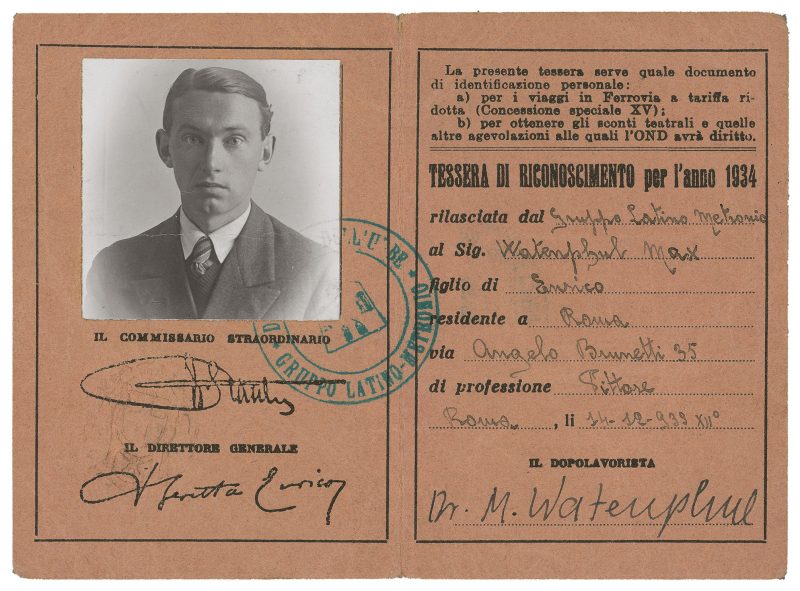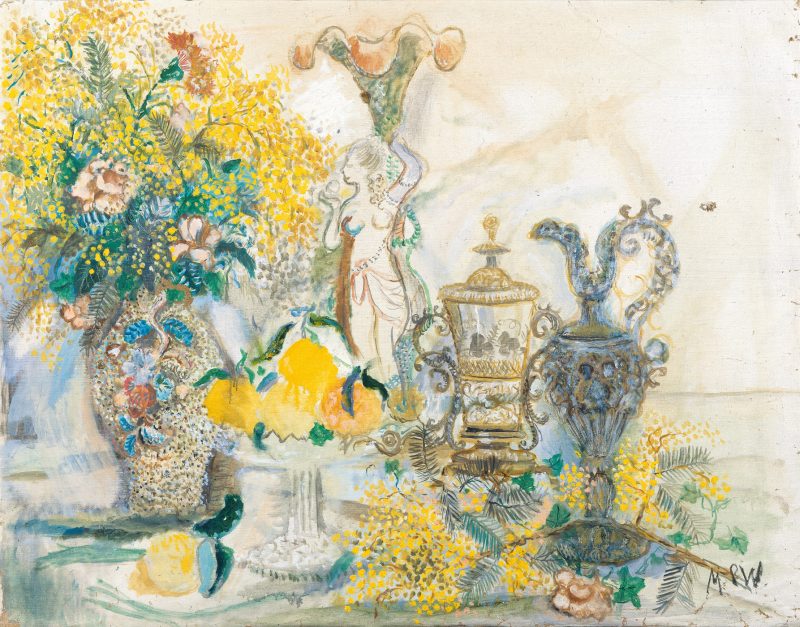1931–1936

Max Peiffer Watenphul concluded his teaching at the Folkwangschule in Essen on April 1, 1931. He was awarded the Prize of Rome the same year.
The Prize of Rome was accompanied by a nine months’ residency at the Villa Massimo in Rome. Peiffer Watenphul arrived in Rome on October 1, 1931. At the German Academy in Rome at the time were Karl Rössing, Uli Nimptsch, Ernst Wilhelm Nay, Werner Gilles, and Fritz Rhein. Max Peiffer Watenphul became acquainted with Ludwig Curtius, Bernhard Degenhart, and Eckart Peterich. He became friends with Maria Grassi, who was from Heidelberg and whose husband was the Italian senator Giovanni Grassi, who had discovered that malaria was transmitted by the Anopheles mosquito. The director of the German Academy at the Villa Massimo was Herbert Gericke, whom Peiffer Waterphul would see again after the war in Florence and in Rome. The extended residency in Rome, free from financial concerns, was auspicious for Peiffer Watenphul’s art, and numerous paintings, watercolors, and photographs were the result. The artist spent July of 1932 in Gaeta, a harbor town southeast of Rome, together with Karl Rössing, Rössing’s wife Erika, and his sister Grace. That summer he returned to Hattingen an der Ruhr.
1933 and 1934 were happy years for the artist. Apart from some trips to Berlin and Paris, he was mostly at his parents’ house in Hattingen. The large garden, with its beautiful flowers, was his joy, and the paintings of flowers that came about during those years are an expression of a merry, carefree time. Many of the artist’s friends came to visit.

In January and February of 1933, he was in Berlin, where he sought to organize an exhibition and sold his photographs to various publishers. The artist went with Walter Lindgens to the Wadden Sea in June of that year, and then to Bremen. Peiffer Watenphul received the Carnegie Prize for his Flower Still Life (G 193) in 1933.
Peiffer Watenphul was back in Rome from the autumn of 1933 to May of 1934.
The artist’s difficulties in Germany began in 1935 when he was living a secluded life in Hattingen. There, in 1935 and 1936, the artist created German landscapes, paintings of industry, and flower still lifes. Peiffer Watenphul described this in an unpublished letter from Hattingen to Maria Cyrenius in May of 1937: “Of late, I have made such beautiful works. Flowers, but prettier than ever. And infinitely more painterly. Here, in fact, painting is the only thing that I have in life.”
He spent March of 1936 with his sister Grace in Latina. Afterward, he traveled with Klaus Gebhard to Sorrento, Capri, and Ischia, where he spent an extended period. He continued on to Sicily in November and December of 1936, visiting Palermo, Catania, and Agrigent.
